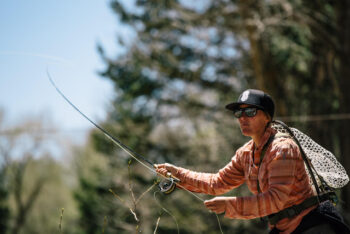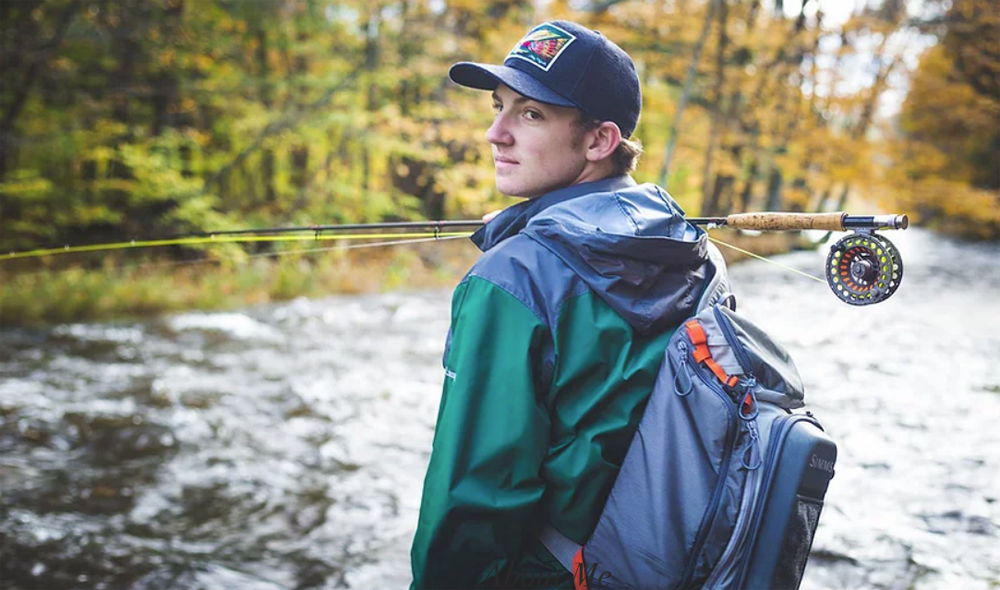
Meet Jennifer Sahn, the new Editor-in-Chief of HCN – the intellectual voice of the American West.
Meet new editor-in-chief
Our readers have high expectations, and Jennifer Sahn is up for the charge.
Jennifer spent her formative years at Orion magazine and later helped lead Pacific Standard. In her 20-plus years in the business, she has earned a reputation as a thoughtful and demanding editor. Conservationist and author Terry Tempest Williams wrote to me recently to praise Jennifer as “smart, tough, rigorous and instinctive. … She nurtures and challenges her writers at once.”
Jennifer understands the power of journalism to drive dialogue, bridge cultural divides and create real change in the world. Just as importantly, she has a deep love for the West. She thrives in those places where the human and natural worlds meet — HCN’s native habitat.
With Jennifer at the helm, you can expect High Country News to stay true to its deep roots in Western soil and committed to giving you the information you need to work for a better future. The West faces daunting challenges, but we remain determined to enlighten and inspire our readers. We know you expect nothing less.

Desert Canyon Landscape with Colorado River Bend.
Reconnecting the Colorado River to enhance resiliency and fishing

Kara Armano, Southwestern Director of Communications [Trout Media], is a lifelong, passionate angler who adores chasing native trout whenever possible in high mountain streams. When she’s not fishing, she enjoys mountain biking, hiking, skiing, and exploring everything the Southwest offers. She is the Southwest communications director, covering Colorado, New Mexico, and Arizona. She is based near Durango, Colorado
Colorado’s namesake river is in trouble. With the ongoing megadrought, climate change and many straws dipping in to satisfy a thirsty, growing population, agriculture and many other uses, fishing and the river’s ecological health are in jeopardy.
Luckily, Trout Unlimited and our partners near the headwaters of the Colorado River are working together to help remedy some of these issues and build the river’s resiliency.
The Windy Gap Reservoir delivers water to a growing northern Front Range, but it severely hampers the health of the Colorado River since it is an on-channel reservoir. You can see the Colorado River flowing in at the top of this photo and flowing out at the bottom. TU is working rebuild this section to offer better fishing and more resiliency. P
With the health of the river in significant decline since the mid-1980s when the reservoir was built, we have seen documented losses of 38 percent of macroinvertebrate diversity––including the complete loss of giant stoneflies (a major food source for trout), the loss of native sculpin populations, and the decline of trout biomass in this state-designated Gold Medal trout fishery.
How to Buy a Fly Fishing Rod if You’re a Life-Long Bait Fisherman
Buying your first fly fishing rod and reel isn’t as intimidating as it may seem
If you have been a bait fisherman all your life, you might have some trepidation about picking up a fly rod. I get it. I grew up a saltwater bait fisherman. My hands reeked from chum slicks, clam bellies, and dead fish. When I started freshwater fishing, I either had a can of nightcrawlers or a bucket of minnows by my side.
I caught plenty of panfish and bass with live bait, and I still enjoy dropping shiners down to hook bronzebacks. And I was skeptical about fly fishing at first because I had never thought pulling trout out of shallow, fast-running stream was for me. But it turns out you can catch any fish that swims on a fly, so even if you don’t have access to the majestic fishing locales you see inside the pages of Field & Stream, there are opportunities abound.
Squash the idea that fly fishing is impossible and give it a try. Here are a few tips and recommendations for buying your first-ever fly rod if you have spent your life as a bait-casting or spinning-rod stalwart.
U.S. Fish and Wildlife Service Promotes Public Access to Hunting and Fishing in Largest Expansion of Opportunities to Date

Contact Vanessa (703) 358-2138.
By Vanessa Kauffman / U.S. Fish and Wildlife Service / May 4, 2021
Increasing access to public lands and waters is a central component of the Biden-Harris administration’s approach to conservation, including the efforts to conserve 30 percent of U.S lands and waters by 2030. This proposed rule would open or expand 939 opportunities for hunting or sport fishing (an opportunity is one species on one field station). The expansion proposed in this rule is the largest in recent history – including last year’s proposed rule which itself was larger than the previous five rules combined.
Today’s action proposes to bring the number of units in the Service’s National Wildlife Refuge System where the public may hunt to 434 and the number where fishing will be permitted to 378. The rule also proposes to formally bring the total number of National Fish Hatchery System units open to hunting or sport fishing to 22.
Hunting, fishing and other outdoor activities contributed more than $156 billion in economic activity in communities across the United States in 2016, according to the Service’s National Survey of Fishing, Hunting and Wildlife-Associated Recreation, published every five years. More than 101 million Americans — 40 percent of the U.S. population age 16 and older — pursue wildlife-related recreation, including hunting and fishing.

Alaska, where everybody fishes their own way.
Senate Passes Water Infrastructure Bill with Major Investments in Job-Creating Conservation Projects
By Kristyn Brady / Theodore Roosevelt Conservation Partnership /April 29, 2021
Today, in an 89-2 vote, the Senate passed the Drinking Water and Wastewater Infrastructure Act of 2021 (S. 914), which would invest $35 billion to upgrade aging water treatment infrastructure, improve wastewater control, and empower states to fund water quality protection and habitat restoration projects that have major benefits for fish and wildlife.
The bill would reauthorize the Environmental Protection Agency’s Clean Water State Revolving Fund (SRF) Program at $3.25 billion annually over five years, or a total of $14.65 billion. This is the first increase for the bedrock program in more than 30 years. To date, over $110 billion in financing has helped local communities improve water resources through this vital program, with a nearly three-to-one return on investment.
“We applaud the Senate for this bipartisan commitment to investing in water resources to create jobs, energize local economies, and improve the resilience of our communities,” says Whit Fosburgh, president and CEO of the Theodore Roosevelt Conservation Partnership. “Moving this legislation forward also sends a strong signal to American sportsmen and sportswomen that innovative, science-based approaches to solving our water resource challenges—especially when layered with benefits for the economy, our fish and wildlife, and public access to outdoor recreation—will be rewarded with much-needed federal investments. The TRCP looks forward to working with the House to advance these priorities swiftly.”







